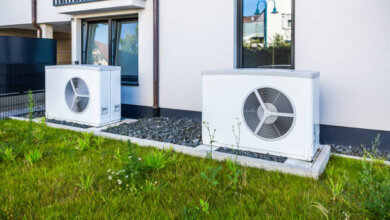Bee-Safe Ways to Protect Fruit Trees at Home
Growing fruit trees at home can be incredibly rewarding. From juicy apples to fragrant citrus and sweet peaches, these trees offer more than just delicious produce, they enhance your garden’s aesthetic and create a thriving mini-ecosystem. However, protecting your fruit trees from pests and environmental damage while keeping pollinators like bees safe requires a delicate balance. Bees play a crucial role in pollination, making it essential to use protective methods that support their survival. In this guide, you’ll learn effective, bee-safe strategies to protect your fruit trees year-round.
Why Protecting Fruit Trees Matters
Fruit trees are valuable not just for their produce but also for their long-term contribution to your garden’s health. Without proper care, they can fall prey to fungal infections, invasive pests, harsh weather, or even nutrient depletion. Moreover, improper pest control can harm the very pollinators your trees rely on. By using thoughtful, eco-friendly protection methods, you encourage healthy growth and better yields while safeguarding the environment. A bee-safe approach ensures pollinators continue visiting your garden season after season, enhancing both productivity and sustainability.
Natural Pest Management for Fruit Trees
One of the most important steps in maintaining healthy fruit trees is pest control, but not all pest control methods are created equal. Chemical pesticides often harm bees, butterflies, and other beneficial insects. Instead, try using natural deterrents such as neem oil, garlic spray, or insecticidal soap. These alternatives help ward off harmful insects like aphids, mites, and caterpillars while leaving pollinators unharmed. Moreover, introducing predator insects like ladybugs or lacewings can naturally reduce pest populations. Keep in mind that any protective action should align with your overall goal of preserving pollinator-friendly environments, especially during tasks like bee hive removal during seasonal changes, which should be handled by professionals to avoid disrupting your tree’s pollination cycle.
Mulching and Soil Health
A thriving tree begins with healthy soil. Applying organic mulch around the base of your fruit trees offers multiple benefits. First, it helps retain moisture, keeping the roots cool during summer and insulated during colder months. Second, it suppresses weed growth that competes with your tree for nutrients. Finally, mulch made from compost, wood chips, or shredded leaves enriches the soil as it decomposes. Strong soil health translates into more robust fruit trees, which are naturally more resistant to pests and environmental stress. Most importantly, mulching is a bee-safe practice that supports the ecosystem without introducing harmful substances.
Protecting Blossoms Without Harming Bees
The flowering phase is one of the most vulnerable and critical stages for fruit trees. It’s also when bees are most active, collecting pollen and ensuring successful fruiting. To protect blossoms from frost or pests without driving away pollinators, consider using lightweight row covers made from breathable fabrics. These allow sunlight and airflow while offering a layer of defense. You should only cover your trees temporarily, ideally in the evening or early morning when bees are less active. This strategy ensures that your trees are protected while still inviting essential pollination during peak daylight hours.
Installing Physical Barriers and Netting
Sometimes, larger pests like birds, squirrels, and even deer can pose a significant threat to fruit trees. While chemical repellents may be effective, they risk contaminating flowers and harming bees. A more eco-conscious alternative is using physical barriers such as bird netting, tree wraps, or garden fencing. Mesh netting placed after the flowering season helps protect ripening fruit without interfering with pollination. Be sure the netting is bee-friendly, tight enough to keep pests out but loose enough to allow bees to access flowers when needed. This approach helps protect your investment while promoting healthy pollinator behavior.
Timing and Seasonal Maintenance
Seasonal care is crucial for maximizing the productivity of fruit trees. Pruning, fertilizing, and pest control should all be timed to minimize disruption to bee activity. For example, pruning during late winter reduces the risk of disease without affecting spring blossoms. Similarly, if your garden requires hive relocation or removal, scheduling bee hive removal during seasonal changes helps reduce the impact on your trees’ pollination cycle. Maintenance timing is everything, aim to perform heavy tasks before or after the blooming period to avoid interfering with bee visits and natural growth.
Encouraging Bee-Friendly Habitats Nearby
While protecting fruit trees is a top priority, it’s equally important to support the bees that help them flourish. Planting wildflowers, herbs, and native flowering shrubs nearby can attract bees away from pesticide-treated areas or netted trees. Providing a clean water source, such as a shallow dish with stones, encourages bees to stay in your garden. Avoid planting aggressive or invasive species that compete with fruit trees for bee attention. With a little planning, you can turn your garden into a thriving pollinator paradise that supports tree health and environmental balance.
Long-Term Fruit Tree Care Tips
Taking care of fruit trees is a long-term commitment. Regular pruning, soil testing, and observing pest behavior can save you from major issues later. Keep a garden journal to track blooming times, fertilizing schedules, and rainfall. Choose disease-resistant tree varieties adapted to your local climate for easier maintenance. Additionally, stay educated about bee-safe products and practices, as environmental standards continue to evolve. Your goal should be to strike a balance, ensuring your fruit trees are productive and resilient while offering a safe habitat for bees and other beneficial wildlife.
Conclusion
Protecting fruit trees doesn’t have to come at the expense of the bees that help them grow. By using natural pest control, proper timing, physical barriers, and soil-friendly practices, you can safeguard your trees while nurturing a pollinator-friendly environment. Incorporating bee-safe techniques into your seasonal gardening routine not only enhances fruit production but also contributes to a healthier ecosystem. With thoughtful care and intentional strategies, your garden can thrive, offering delicious rewards for you and a safe haven for bees year after year.




